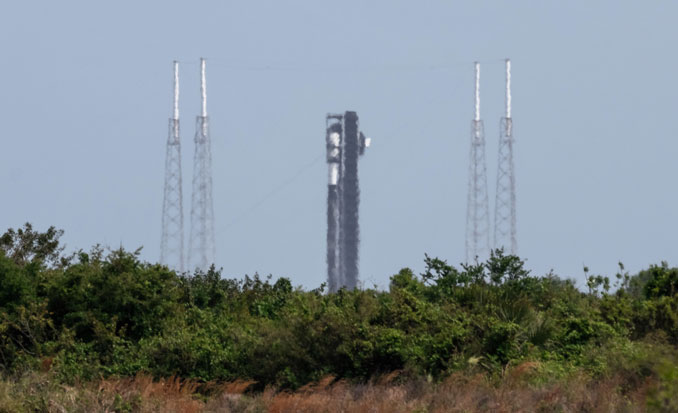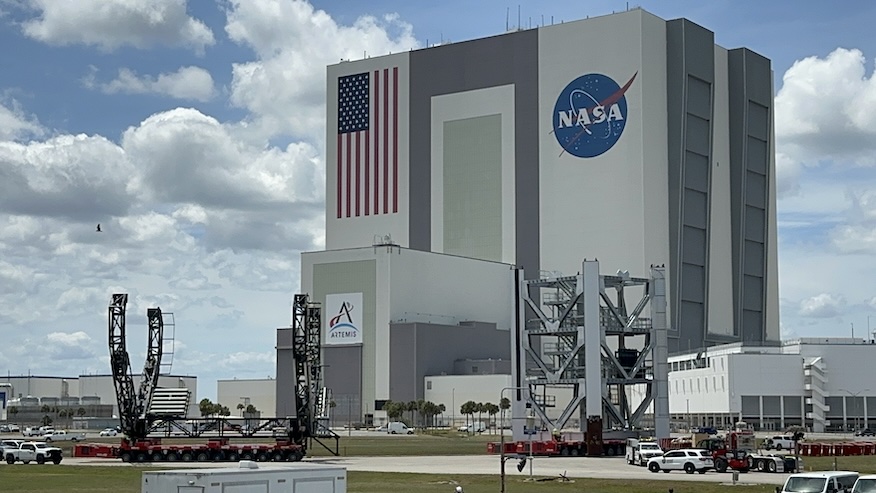
Update 8:30 p.m. EDT: SpaceX scrubbed the mission due to poor weather; targeting Friday for launch.
Persistently poor weather caused SpaceX to stand down from a Thursday night Falcon 9 launch. Central and southern Florida have been hammered by rounds of thunderstorms and heavy tropical downpours expected to last several days.
Liftoff of the Starlink 10-2 mission is now set for 4:35 p.m. EDT (2035 UTC) Friday. The Falcon 9 rocket will carry 22 Starlink satellites to low Earth orbit on the 44th dedicated Starlink mission of the year.
The mission marks the 61st Falcon 9 flight for the company in 2024, which will tie the total number of orbital launches it achieved in all of 2022. Spaceflight Now will have live coverage beginning about an hour prior to launch.
[embedded content]
Heading into the Thursday launch opportunity, the 45th Weather Squadron forecast a roughly 25 percent chance of favorable weather during the new launch window.
Meteorologists expressed concerns about anvil clouds, cumulus clouds and the probability of violating the surface electric fields rule, all of which factor into the possibility of the rocket generating lightning if it were to launch in suboptimal conditions.
The forecast for the 24-hour backup window presents all the same weather concerns, minus the surface electric fields rule. The opening of the window on Friday begins at just 40 percent favorable for launch and improves to 80 percent favorable by the end of the window.
The mission was delayed from Wednesday for reasons that SpaceX didn’t disclose. Early Wednesday afternoon, SpaceX pushed the planned 5:20 p.m. launch to the end of the evening’s launch window before ultimately scrubbing the mission mid-afternoon. At that time it was obvious preparations were running behind schedule as the rocket has not raised vertical launch configuration in time for a launch.
The Falcon 9 first stage booster supporting this mission, B1073 in the SpaceX fleet, will launch for a 16th time. It previously supported the launches of ispace’s HAKUTO-R lunar lander, the Bandwagon-1 rideshare mission and 10 previous Starlink missions.
A little more than eight minutes after liftoff, B1073 will land on the SpaceX droneship, ‘Just Read the Instructions.’ This will be the 84th landing on this droneship and the 319th booster landing to date.
The mission comes at a busy time for SpaceX and NASA. This week, the two along with the Federal Aviation Administration (FAA) and other federal agencies are hosting a series of in-person meetings to inform the public about and take feedback regarding the proposal for SpaceX to launch Starship missions from Launch Complex 39A (LC-39A) at NASA’s Kennedy Space Center.
SpaceX also recently sent off the last two tower segments along with the chopstick arms for its second Starship tower for its Starbase facility in southern Texas.

- SEO Powered Content & PR Distribution. Get Amplified Today.
- PlatoData.Network Vertical Generative Ai. Empower Yourself. Access Here.
- PlatoAiStream. Web3 Intelligence. Knowledge Amplified. Access Here.
- PlatoESG. Carbon, CleanTech, Energy, Environment, Solar, Waste Management. Access Here.
- PlatoHealth. Biotech and Clinical Trials Intelligence. Access Here.
- Source: https://spaceflightnow.com/2024/06/13/live-coverage-spacex-to-launch-22-starlink-satellites-on-falcon-9-flight-from-cape-canaveral-2/



